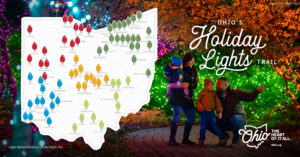Black Bears, and Brown Poplar Trees
Why are the poplar trees turning brown?
Driving down the highways lately you may have noticed a lot of trees with brown leaves. Chances are that the trees you are seeing are tulip poplars, and the reason they are brown is due to a little insect called a yellow poplar weevil.
According to the West Virginia Department of Forestry there are a lot of yellow poplar weevils this year. The weevils themselves aren’t yellow; they are dark little insects that look like ticks at first glance, but they only eat poplar leaves so they won’t hurt you or your animals.
They are native insects, and most healthy trees will live, but they just aren’t going to be very pretty the rest of the summer and fall. By mid-July the weevils will go into hibernation and won’t return until next spring.
According to the Ohio State University Extension Service, the weevils are native insects and will feed on tuliptree (tulip poplar), sassafras, and deciduous and evergreen magnolias. They are very tick-like in form and home owners often express concern about the “flying ticks” that may land on their clothing.
—
Bears have been in the news a bit here in Ohio with several reported sightings including one hit by a car near Lancaster, and an Athens County teenager attacked by a bear in the Great Smoky Mountain National Forest.
Young male bears are occasionally seen this time of year as they roam about looking for new territory. I’m not going to waste a lot of ink describing a black bear; if you see one, you will know it.
However if you should happen to see a black bear in the wild (or in your garbage) don’t approach the animal or try to feed it. This may sound like common sense, but far too often these wandering bears cause a major sensation in the little towns and villages they pass through, with people chasing them, trying to tempt it with food to get photographs, or otherwise harassing them. Black bears are occasionally shot by local cops because they “charged someone,” never minding the fact that the bear was totally surrounded by humans.
For the record, black bears are endangered in Ohio and it is illegal to kill them except in extreme circumstances of self-defense (the mere presence of the bear is not enough to constitute an imminent threat).
Fortunately bear attacks are very rare, and the last bear-related fatality in Ohio involved a captive bear that attacked and killed one of its caretakers. If a black bear should attack you, you are advised to fight back. Black bear attacks are generally predatory in nature, meaning that the bear wants to eat you, so you have little to lose by fighting back.
If you see this endangered Ohio animal, report the sighting at 1-800-WILDLIFE. The Ohio Division of Wildlife keeps track of confirmed and unconfirmed black bear sightings. Most reported sightings are considered “unconfirmed,” which simply means that was no additional proof (tracks, photos, hair, scat, or damage caused by a bear) other than the sighting alone.
Jim Freeman is the wildlife specialist for the Meigs Soil and Water Conservation District. He can be contacted weekdays at 740-992-4282 or at [email protected]









